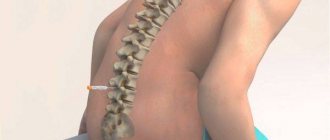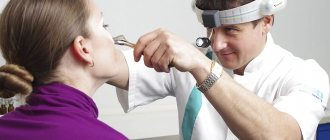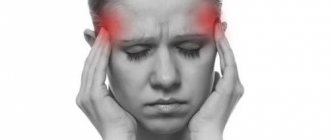Pain between the shoulder blades is not a typical location for back pain. As a rule, if your back hurts, then it hurts in the lumbar region or some specific vertebrae.
But compression, burning or pulsation in the upper back between the shoulder blades can cause confusion - such a problem is not heard and is rarely discussed. Therefore, a person who is faced with a similar situation searches on the Internet for answers to the questions “Why does my back hurt in the area of the shoulder blades? Which doctor should I consult for back pain between the shoulder blades? And how to treat pain in the shoulder blade?”
In just 6 minutes you will learn a lot more information on this topic and will know how to act in such a situation.
Pain in the shoulder blades: what could be the causes?
The average person is well aware of what the scapula is - a flat triangular paired bone in the upper back. But why does it hurt?
The most likely reasons could be:
- Spinal problems, injuries. Poor posture, curvature of the spinal column, and osteochondrosis lead to compression of nerve endings and the occurrence of pain symptoms.
- Diseases of the internal organs: pneumonia (pneumonia), pleurisy, angina pectoris, pericarditis, gastritis and gastric perforation due to ulcers are accompanied by severe pain in the upper back.
- Muscle problems: myalgia, muscle inflammation (myositis) cause nagging pain in the shoulder blades.
Why does my back hurt in the shoulder blade area? In addition to the above, pregnant women may experience pain in the shoulder blades at different stages, which is normal for them. But the problem can be more serious - neoplasms (both benign and malignant) in the chest or abdominal cavity can give similar symptoms. However, do not rush to panic and sound the alarm - even stress can indirectly lead to pain in the shoulder blades due to muscle strain and stooping. Such symptoms can be caused by excess weight, poor posture at work or while sleeping.
Types of pain between the shoulder blades
The symptom itself - that is, the nature of the pain in the shoulder blades - says a lot about the underlying disease. Pain can be acute, paroxysmal or chronic (constant), and it also varies in type and intensity.
Aching pain in the shoulder blade
In most cases, aching pain between the shoulder blades indicates pathology of the vertebrae and spine. Scoliotic deformities of the spinal column, osteochondrosis or herniated disc cause such symptoms. A peptic ulcer can also manifest itself as aching pain - in this case, you cannot do without a gastroenterologist.
Burning in the area of the shoulder blades
The occurrence of burning pain in the shoulder blades tells us about potential heart problems, for example, coronary heart disease. Such pain does not depend on movement, rarely lasts long and goes away soon after taking nitroglycerin. The second option is pinching of the nerve by intervertebral discs. Nitroglycerin will not help here, but non-steroidal anti-inflammatory drugs will help. Relief comes if you change your body position to a more comfortable one. In addition to the above, a burning symptom occurs when gastric contents reflux into the esophagus (reflux esophagitis).
Dull pain between the shoulder blades
As a rule, patients describe the pain that occurs due to pathology of tendons, ligaments and muscles with the word “dull.” The same characteristic is given to painful sensations in diseases of internal organs - cholecystitis or cholelithiasis.
Throbbing pain in the shoulder blade
Injury to the ribs, shoulder blades or vertebrae provokes the appearance of characteristic throbbing pain in the area of the shoulder blades. These painful symptoms may become more pronounced when sneezing or coughing. You should not hesitate to deal with such symptoms - you need to quickly contact a traumatologist.
Pressing pain in the shoulder blade
With inflammation in the muscles surrounding the scapula, a feeling of compression may occur. In addition to severe pain, myositis (inflammation of the muscle) leads to limited mobility of the shoulder and arm.
Sharp, sharp pain between the shoulder blades
An incipient stomach ulcer, an attack of biliary colic or pyelonephritis is manifested by a stabbing, sharp pain. In case of perforation of the ulcer, the pain begins in the stomach, accompanied by nausea, heartburn and bloating. With pleurisy, the patient will also notice a sharp pain in the area of the shoulder blades, but it will be complemented by a cough.
Pain when inhaling
If pain appears or intensifies during inhalation, this may signal us about lung disease or intercostal neuralgia. The pain with neuralgia has a shooting, encircling character. And with lung diseases, as a rule, the pain is accompanied by a cough, poor general health, weakness and fever.
Whatever the nature of the pain between the shoulder blades, if it does not subside within 1-1.5 days, it is recommended to visit a doctor.
Which doctor should I consult for back pain between the shoulder blades?
Since the etiology of pain between the shoulder blades is quite varied, the first thing you need to do is make an appointment with a therapist. The doctor will assess the situation, collect anamnesis, conduct an initial diagnostic examination and advise which specialist to contact for the most effective relief from pain in this localization.
Further treatment can be carried out by a traumatologist, orthopedist, neurologist, gastroenterologist, cardiologist, pulmonologist and other highly specialized specialists.
How is pain in the shoulder blades diagnosed?
In addition to collecting complaints, examining and carefully palpating (feeling) the causative area, the doctor may need to carry out a number of additional diagnostic measures:
- General and biochemical blood test, urine test.
- X-ray examination (if a deeper study is necessary, computed tomography (CT)).
- Magnetic resonance imaging (MRI) to assess the condition of internal organs, ligaments, tendons.
- Ultrasound diagnostics may be useful in determining kidney and bowel function.
- Electrocardiogram for diagnosing heart disease.
- Fluorography for suspected pulmonary problems.
- Gastroscopy to study the function of the stomach.
Back pain between the shoulder blades: treatment methods
Diagnosis of neuralgia
After collecting anamnesis, visual examination and palpation, the specialist will prescribe an instrumental examination:
- X-ray of the bone tissue of the sternum (in the IntegraMed CDC (formerly NDC) is not performed);
- Ultrasound of internal organs;
- CT in combination with myelography - a contrast agent in the spinal canal (is not performed at the IntegraMed CDC (formerly NDC);
- MRI of the costal space;
- contrast discography of intervertebral discs (in the IntegraMed CDC (formerly NDC) is not performed).
To exclude infections and hormonal disorders, for example during menopause in women, blood is taken for analysis and a consultation with specialized doctors (infectious disease specialist, endocrinologist, etc.) is prescribed.
Treatment of pain between the shoulder blades
After reading this article, you understand that pain in the shoulder blades can be a sign of very different diseases. If you do not suffer from any chronic illness and are experiencing pain between the shoulder blades for the first time, then you can try to approach treatment symptomatically. First of all, make sure that you are not in a constant state of muscle tension due to an uncomfortable posture while sleeping or working. You can take a painkiller 1-2 times. However, if this does not help, you should no longer delay visiting the doctor.
How to relieve pain in the shoulder blades
When pain comes on suddenly and is disabling, the best thing you can do is try to relieve the pain. Taking analgesics (Nimesulide, Ibuprofen, Ketorolac) will temporarily relieve pain. You can apply an ointment with the same active ingredients to the painful area of the back.
We do not recommend massage or self-massage in such cases. We also do not recommend using any warming compresses or warming your back in any other way. All this can only make the problem worse.
How to treat shoulder blade pain
Treatment of the disease that provoked the symptom in the form of pain between the shoulder blades should be carried out by a doctor of the appropriate specialty. This can be a very serious pathology, and its treatment must be treated carefully. We will not delve into cardiology and gastroenterology, but will talk about restorative and restorative procedures that will be useful for any possible disease.
- Physiotherapy . In the rehabilitation of a patient after diseases of the spinal column and joints, a gradual return of the body to physical activity plays a huge role. Of course, this should not happen during an acute period of illness, when every movement is difficult. However, during the recovery stage, physical therapy and therapeutic exercises have a positive effect on the condition of the whole body by strengthening muscles and working out joints.
- Kinesiotherapy. For quick and functional recovery after injuries and diseases of the supporting system, kinesiotherapy is prescribed. This set of exercises with your own weight or with specialized simulators gently and without overloading the body helps restore the former mobility to damaged joints. In addition, the stimulating effect of kinesiotherapy on immunity and metabolism has been proven. Regular exercise can slow down the transition of the disease to the chronic stage and prevent relapse of the disease.
- Massotherapy. The beneficial effects of massage are difficult to overestimate. In addition to the physiological effect on the body, stroking and kneading muscles also have an effect on a person’s psychological state. And by stimulating blood circulation and metabolism, recovery occurs faster and more harmoniously.
- Acupuncture. An experienced acupuncturist is able to influence special points (acupuncture points), stimulating the body's internal reserves to fight the disease. The indications for the use of acupuncture are so wide that it is difficult to name a disease for which it would be ineffective. This is an effective way to get rid of pain, muscle tension and spasms. According to research, acupuncture in combination with other physiotherapeutic procedures can reduce the duration of treatment.
At the KANO physical therapy clinic in Minsk, we offer you the experience of our specialists, which they have collected and implemented in the “Healthy Back” rehabilitation program, thanks to which you can move again without pain and do what you love, or simply forget about the problem that has haunted you a lot years.
How to relieve pain under the left shoulder blade
Pain sensations below the shoulder blade on the left, especially if they are quite intense, interfere with movement and breathing freely, require qualified help, since they pose a threat to human health and life. You cannot ignore them and self-medicate. Taking analgesics, antispasmodics and other painkillers can relieve pain, but will not eliminate the cause, which must be discovered by a doctor.
Important! Emergency care will be required in case of severe pain with increasing intensity and rapid deterioration in well-being.
Read also
Lambert-Eaton syndrome
The first description of the disease in the literature appeared in 1953. J. Anderson described a case from practice: a 47-year-old man with lung cancer experienced symptoms similar to myasthenia gravis.
After tumor removal... Read more
Facial paralysis (Bell's palsy/facial neuritis)
Facial paralysis is spontaneous weakness of ½ of the face. The cause is swelling of the facial nerve, as a result of its compression inside the temporal bone or in the outlet from it. Most often this leads to...
More details
Intracranial hypertension on MRI
Intracranial hypertension is an increase in intracranial pressure. Normal intracranial pressure is 15 mm Hg. When blood pressure doubles, a stroke occurs. At a pressure of 50 mm Hg, the patient can...
More details
Rehabilitation
Restoration of the body after diseases of the central and peripheral nervous system, operations on the brain and spinal cord, conditions after removal of the mammary gland due to a tumor, consequences...
More details
Vertebral artery syndrome
The main vascular highways carrying blood to the brain pass in the neck - these are two carotid and two vertebral arteries. A decrease in blood flow through the vertebral arteries will lead to the development of acute...
More details
What are the symptoms of intercostal neuralgia?
- Sudden episodes of severe shooting or stabbing pain that follows the path of a damaged or irritated nerve. Symptoms appear on either the right or left side. The pain intensifies with any movement.
- Constant aching or burning pain.
- Tingling or numbness.
- Muscle weakness.
- Loss of muscle mass or atrophy.
- Involuntary muscle twitching or spasms.
In children, characteristic pain occurs during a period of intense growth, when the skeleton is growing rapidly. Severe pain in the affected areas and cramps are the main symptoms of neuralgia by which the disease is recognized in children. Additional signs include profuse sweating, increased excitability, tearfulness, sleep disturbance and stuttering.
The main goal of treatment is to distinguish this disease from others. It is important to distinguish attacks of neuralgia from manifestations of heart attack and angina. With neuralgia, there is no fever, shortness of breath, difficulty breathing, or blue discoloration of the skin.
Treatment of intercostal neuralgia during pregnancy
During pregnancy, the presence of neuralgia is considered a fairly serious problem. It requires proper attention, which will help avoid complications for the expectant mother and baby.
All treatment that will be given to a pregnant woman for neuralgia must be prescribed by the attending physician. Self-therapy is extremely undesirable, as it can greatly harm the woman and the child in the womb.
Many patients prefer not to take medications. They limit themselves to vitamins and mineral complexes, use ointments and warm compresses, observe bed rest and perform simple physical exercises.
Gymnastics for neuralgic pain in pregnant women is very effective. Physical exercise does not allow blood to stagnate in the joints and parts of the spine.
If the pain becomes unbearable, novocaine blockades are prescribed with caution.










